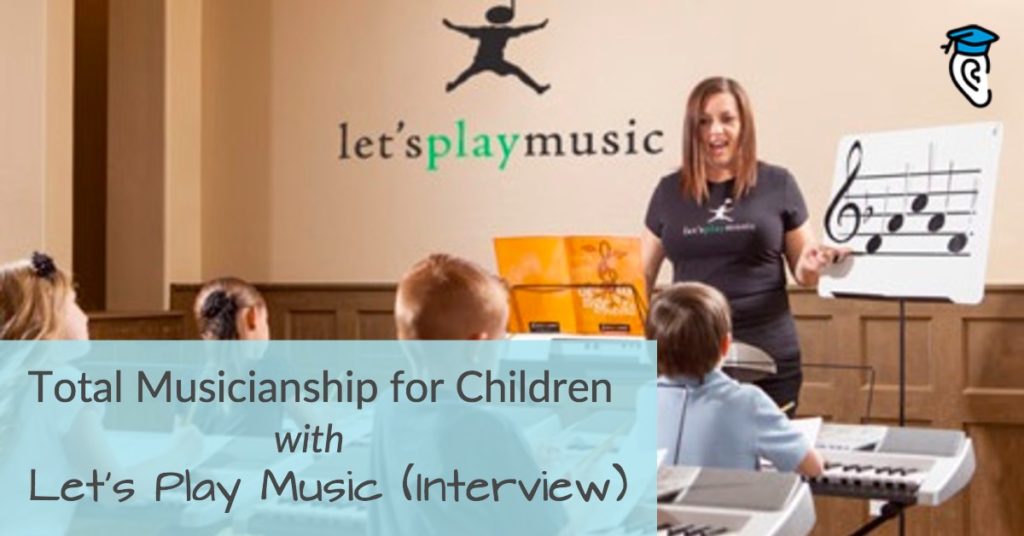It’s a dream of many parents that their children will grow up to love and excel in playing music. But how exactly do you raise musical children? What can you do to nurture their inner musicality from a young age, beyond the standard approach of enrolling them in instrument lessons and just hoping it works out?
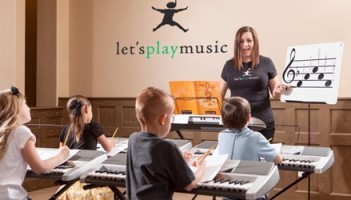 Let’s Play Music has long been one of the leaders in this area, with over 300 teachers offering in-person music classes for children across the United States and Canada. Let’s Play Music founder, Shelle Soelberg, previously joined us here on the site, writing about Solfeggio and Ear Training and we were delighted recently to have the opportunity to catch up with team member Gina Weibel and hear the latest about this innovative and effective childrens music program…
Let’s Play Music has long been one of the leaders in this area, with over 300 teachers offering in-person music classes for children across the United States and Canada. Let’s Play Music founder, Shelle Soelberg, previously joined us here on the site, writing about Solfeggio and Ear Training and we were delighted recently to have the opportunity to catch up with team member Gina Weibel and hear the latest about this innovative and effective childrens music program…
Welcome to EasyEarTraining.com Gina, and thanks for joining us today.
Q: If you had to explain Let’s Play Music in a tweet-sized sentence, what would it be?
Let’s Play Music is a course emphasizing total musicianship through singing, piano, classical music, note reading, and ear training. All taught through play!
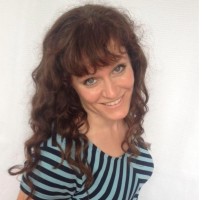 We have always put emphasis on providing an excellent research-based program with superb materials and highly trained teachers, and that hasn’t changed. We still train teachers annually in person and have ongoing requirements for them to maintain licensing and certification. It’s satisfying to know that anywhere you attend a Let’s Play Music class, you’ll consistently know what to expect. If your family moves 1,000 miles in the middle of the semester, you can find a new teacher and join the class without a hiccup.
We have always put emphasis on providing an excellent research-based program with superb materials and highly trained teachers, and that hasn’t changed. We still train teachers annually in person and have ongoing requirements for them to maintain licensing and certification. It’s satisfying to know that anywhere you attend a Let’s Play Music class, you’ll consistently know what to expect. If your family moves 1,000 miles in the middle of the semester, you can find a new teacher and join the class without a hiccup.
There are a few curriculum topics today that weren’t present in the beginning. For example, we always taught students how to read, play, and write rhythms, but we eventually realized it’s advantageous for graduates to use the same terminology that mainstream musicians use. So, since 2011 we’ve been teaching our third-year students how to use the common counting patterns that they’ll be expected to know (1-ee-and-a, 2-ee-and-a). They had already internalized the concepts and could perform the rhythms, but we just wanted to make sure they could transition to any teacher. These seven-year-old graduates can talk to you about rhythms, they can talk about harmonizing with I, IV, and V chords, they know the terminology the rest of the world is using.
We also rearranged a couple of ear-training tasks. In first year we play games with the I, IV and V chords in root position, block and broken. We don’t explain and label chord inversions until the third year, but realized students would benefit from hearing those before labeling them. So now we practice singing arpeggios of chord inversions as early as year one. By the time they get to year three, the experience is like “of course I can hear what’s going on – I’ve been singing the different inversions for years.” It’s better. We know the end goals, so we’re playing games in year one and two that eventually make teaching complex things really easy.
When we add new concepts, new singable songs are composed and new games are crafted. So the curriculum today has a handful of songs and games that didn’t exist in the beginning. Of course, artwork for materials and online support continue to improve. We actually have some new artwork and play-along CDs coming out Spring of 2016!
I think I better list two things: one for parents who compare LPM to preschool classes, and one for parents who compare LPM to traditional piano lessons.
There definitely are many preschool music programs to choose from. Let’s Play Music was created for a child who is just old enough to move beyond the experiential music programs. Those programs help youngsters experience different types of music, find the beat in music, and really start to enjoy music as something to play with. That’s important.
But what we offer is the specific intention of piano preparation in the first year. We read from the staff and play tone bells as a precursor to the keyboard. We introduce the primary chords as the foundation for all music and practice group accompaniment on the autoharp.
Age 4 is the minimum to begin Let’s Play Music. Younger students aren’t developmentally ready to do weekly homework or be accountable to accompany a group with an instrument, whereas four and five year-olds can rise to challenges beyond preschool music classes.
To the second point, parents have traditional piano, violin, and voice lessons to consider. Let’s Play Music does use voice and piano as tools for our class, but unlike most traditional programs, we focus on complete musicianship rather than just instrument skills. Our classes involve classical music learning, ear training, theory, and composition in addition to reading and performance skills.
That means students who graduate from Let’s Play Music should be prepared to excel as a musician with whatever instrument they pursue next with a private teacher. Some parents register for our classes specifically because they took years of traditional piano lessons and didn’t love it. Most of them can play but never understood music. How did the composer come up with this accompaniment? How can I change it? How can I make up my own music?
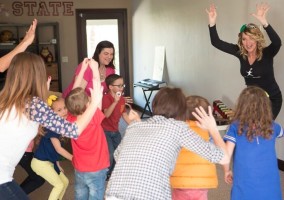 Parents who have no musical background LOVE Let’s Play Music because they get a two-for-one deal. They sign their child up for class and they get to learn everything, too. We require parents to attend every other class in the first year, so they’ll learn what their child learns, bond with their child, and be prepared to nurture music practice at home. The most common feedback from non-musical parents is, “I finally understand music theory! Thank you for helping me hear it, use it, and learn it along with my child.” I guess that is a third way we are fundamentally different: we involve the parents in class.
Parents who have no musical background LOVE Let’s Play Music because they get a two-for-one deal. They sign their child up for class and they get to learn everything, too. We require parents to attend every other class in the first year, so they’ll learn what their child learns, bond with their child, and be prepared to nurture music practice at home. The most common feedback from non-musical parents is, “I finally understand music theory! Thank you for helping me hear it, use it, and learn it along with my child.” I guess that is a third way we are fundamentally different: we involve the parents in class.
Students must be age 4 or 5 to start Let’s Play Music, so we try to catch them before they start private lessons. This is a three-year foundational course that sets them up for success with their eventual private teacher. Research shows that children at this age learn best in a group class with playful and fun instruction, an environment you don’t get at a private lesson. We really do get up and dance, pass balls to each other, and skip around the room. It’s very active because that’s what helps the students learn.
Private instructors vary widely, but tend to focus on reading and performing music with the instrument of choice. We value performing as a part of complete musicianship. It’s very possible to take years of private lessons and not feel competent about making your own music. I tell parents that private lessons can wait – your child will be most successful if you help them get this great foundation first. And then you can take a lifetime of private lessons and really excel.
Three years in this program is a really short time! I’m always surprised when it’s graduation time. I define success when students graduate having developed an attitude about music that launches them to success over the next few decades of hard work to come.
”I define success when students graduate having developed an attitude about music that launches them to success over the next few decades of hard work to come.”
Success is when graduates have learned how to practice, they have internal motivation to play their instrument, they feel confident that they can take steps to learn a new piece of music, and they think of themselves as talented musicians.
Our students have varying levels of piano ability depending upon their age and how much home practice time was invested. They have beginning piano skills such as reading the staff, playing scales and cadences, and sightreading melodies. In addition, they have developed skill in accompanying themselves and others, transposing, improvisation and composition. But beyond these piano skills, since Let’s Play Music develops the complete musician, we see success in the student that can:
- sing in tune
- sing in harmony
- sing middle C on command
- find other pitches in the scale in relation to a given pitch, and
- recognize chords, intervals and major/minor tonalities by ear
These skills are the factors that form a complete musician, and this is the measure of success for us.
In the long run, who’s going to remember that you could play three variations of “Twinkle, Twinkle”? By the time the LPM student is an adult, the measure of success will be the student’s musicianship and drive that carried him through life. Those are harder to teach and measure than a list of milestones, but that’s what I value the most.
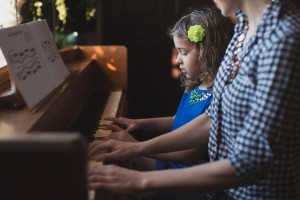 I’ve had students go on to perform in musical theater, continue in piano study, and pursue all variety of band instruments. The students I’m closest to are my own children, of course. When my son started trombone lessons at age ten, his teacher was amazed with his well-trained ear; it allowed him to hear and play exactly correct pitches with subtle nuance that experienced players seek. His progress with his instrument continues to be impressive. I expect music teachers of all varieties get LPM students and declare “this kid is just musically talented” because they’ve got that foundation.
I’ve had students go on to perform in musical theater, continue in piano study, and pursue all variety of band instruments. The students I’m closest to are my own children, of course. When my son started trombone lessons at age ten, his teacher was amazed with his well-trained ear; it allowed him to hear and play exactly correct pitches with subtle nuance that experienced players seek. His progress with his instrument continues to be impressive. I expect music teachers of all varieties get LPM students and declare “this kid is just musically talented” because they’ve got that foundation.
So, I mentioned that four years is the minimum age to begin Let’s Play Music, but we always recognized that younger children benefit from music exposure. For years we sent families with toddlers away to other preschool music classes and said, “come back to us when you’re four.”
About five years ago, we decided to make sure there was a quality preschool music class available for pre-LPM families, by offering it ourselves. Most Sound Beginnings teachers are also LPM teachers. We designed the program for 2-4 year old children with a parent, but younger siblings can come, too. It’s very much a family program.
Because we know what the children will be learning in LPM, we tailored SB to include similar musical elements at an easier level. We introduce solfege and ear training, reading very simple music notation, and finding patterns in classical music. Instead of homework assignments, we have optional home activities. SB is not required before enrolling in LPM, but those kids get a bit of a head start.
While we’re playing with different types of music, we include preschool skills. If we want a song that helps them sing on pitch and recognize a certain musical pattern, why not write one that also has lyrics to teach about colors, addition, months of the year, or the planets? So our games teach music skills and preschool facts at the same time. Every song is carefully chosen.
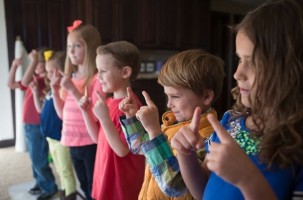 I think the internet is an amazing educational tool. When I’m looking for sheet music or trying to learn a specific skill, the internet is my first resource. I take my ipad loaded with music to ukulele play-alongs. I have apps on my phone so I can do some ear training whenever I have a free five minutes. I get on the Let’s Play Music teachers Facebook group to get advice for running the studio or helping a specific student. It’s amazing to have resources so available!
I think the internet is an amazing educational tool. When I’m looking for sheet music or trying to learn a specific skill, the internet is my first resource. I take my ipad loaded with music to ukulele play-alongs. I have apps on my phone so I can do some ear training whenever I have a free five minutes. I get on the Let’s Play Music teachers Facebook group to get advice for running the studio or helping a specific student. It’s amazing to have resources so available!
There are two sides to every coin, though. Electronic devices indirectly hinder learning when the allure of ever-present entertainment outweighs the motivation to practice! We occasionally implement screen-free week at my house, and suddenly everyone wants a turn at the piano! Electronics can be distracting.
”We occasionally implement screen-free week at my house, and suddenly everyone wants a turn at the piano!”
At LPM, we still train teachers and teach classes face-to-face. We purposefully cultivate relationships because research shows that children learn best when a caring adult is involved. A caring teacher and caregiver are far better instructors than a screen. We are experimenting with a digital play-along tool for students to use at home with their piano as a supplement to “human” teaching, but we assert that this is merely a supplement. Without the human touch, learning is stunted. We’re also looking at online ear-training games for use at home. We’re open to using resources that fit with our curriculum.
Every year we reach more cities and more children, which is exciting. I attribute much of the success to the enthusiastic teachers. Many say they have become better musicians from teaching the classes, and all say “I wish I had learned it this way when I was a kid!”
We are super excited about Spirit Week, March 14-19, 2016 when students, parents, and teachers share their love for LPM on our Facebook page. We give out lots of prizes and revel in photos and videos of students making music. They are all part of our big, musical family!
And as I mentioned earlier, we are excited about our 2016 revisions. For five years we have been collecting feedback from parents and teachers to find out how we can improve each family’s Let’s Play Music experience. We pursue quality and we utilize the most current methodologies in our curriculum. We are releasing new songs and new designs so our curriculum continues to be cutting edge.
Terrific!
Thanks again, Gina, for joining us here on EasyEarTraining.com and sharing more about this wonderful music program.
Here at Easy Ear Training we’ve long been admirers of the Let’s Play Music approach and we’re excited to see their new developments in 2016 and beyond. Learn more about LPM on their website letsplaymusicsite.com where you can find a teacher in your local area. Be sure to also follow their blog and Facebook page for the latest news and resources.

